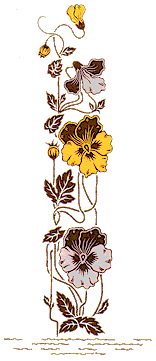
The fulfilment of the life of man consists in the realisation of the Atma; that is to say, Atmasakshathkara. To get this realisation, one should be entirely free from Vasanas or impulses. Moksha or Liberation is, in the true sense of the term, liberation from the bondage of these Vasanas. These tendencies are of two types, beneficent and maleficent. The beneficent tendencies are saturated with holiness; the maleficent tendencies feed the mind and make it more and more uncontrollable and unsteady; they spread and strengthen the desire for objective pleasure.
If the Subha Vasana or beneficent impulses are encouraged and cultivated, they will not go on multiplying indefinitely and binding the mind: they become fried seeds, which will not sprout. If you stick to the Subha Vasanas, you can easily acquire Bramajnana. These Vasanas are characterised by such activities as the association with Mahatmas, reverence for the great, conversation with them, following their advice, charity, fortitude, love, patience, truth, courage, continence, etc. These are the pure impulses. The impure tendencies (Vasanas) lead one to such vices as the craving to see things that cater to the lower desires (like cinema pictures): to eat dishes that are full of Rajas (like fish, flesh, etc.); to drink intoxicants that ruin one's personality; they develop anger, delusion, greed, conceit, deceit, hatred, envy etc. Such impure tendencies are of three types; Worldly Vasanas, Scholarly or Intellectual Vasanas and Physical or Bodily Vasanas. The physical impulses make man desire a beautiful physique, a strong sturdy build, a glossy skin that will never be disfigured by wrinkles and round hard muscles. The scholarly Vasanas prompt man to crave for being known as an unrivalled expert and for the defeat of every competitor in the field. And lastly, the Worldly Vasanas, the craving for glory, for power, personal authority and pomp. All such desires can be grouped under this head. All these are impulses. These bind you to the wheel of Samsara and tie you down to this Earth. The giant tree called mind has two seeds, Vasana and Prana. The seed becomes the tree, the tree yields the seed. The Prana moves because of the Vasanas. The Vasanas operate because of the Prana.
Of these, even if a single one is destroyed, the other too is destroyed.
So, if the mind has to be free from their influence, Ignorance or Ajnana,
has to be transformed first. That Ajnana does not exist alone; it has
an off-spring: Ahamkara, selfishness. That Asura, again, has two children,
Raga and Vasana; that is to say, Passion and Craving. Passion and Craving
are closely interrelated. As the passion, so the desire. They are sisters.
Raga means attachment or attraction. Through Raga, man gets the feelings
of my and mine; those feelings provoke desires; desires breed worry. Therefore,
to remove Ahamkara these two, Raga and Vasana, have to be annihilated.
That means Ajnana has to go; for by that means alone can Ahamkara be killed.
How to destroy Ajnana and develop Sujnana? That is the question! The answer
is: through Dhyanam. The conquest of Ajnana, Ahamkara, Raga and Vasana
brings about Moksha or Liberation for the Jivi. ![]()